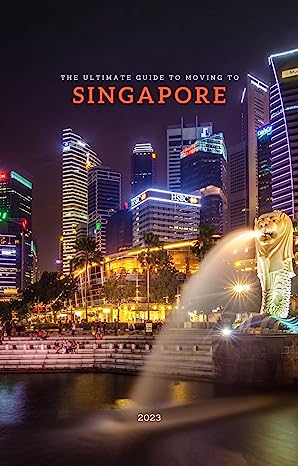Have you ever wondered how to greet someone in Singapore? This bustling city-state is a melting pot of cultures, and knowing how to say hello is the first step in connecting with its diverse population.
In Singapore, the most common way to say hello depends on the cultural context. In a predominantly Chinese setting, you might hear “Ni Hao” (Mandarin), while in Malay communities, “Selamat Pagi” (Good Morning) or simply “Hello” in English is widely used. Tamil speakers often use “Vanakkam” as a greeting.
In this article, we will explore the fascinating linguistic landscape of Singapore. You’ll learn not just how to greet people in various languages, but also gain insight into the cultural nuances that make Singapore uniquely welcoming. Whether you’re a traveller, a language enthusiast, or just curious, this guide will enrich your understanding and appreciation of Singapore’s rich cultural tapestry.
Key Takeaways
- Singapore is a multilingual nation with four official languages and the unique Creole language, Singlish.
- Awareness of cultural etiquette and essential phrases can improve communication experiences for visitors.
- Different contexts may guide one’s approach to greetings and interactions in Singapore.
How Do You Say Hello in Singapore? A Concise Guide to Greetings
Singapore, a multilingual and multicultural country, offers a unique way of saying hello. With four official languages—English, Malay, Tamil, and Mandarin—greetings might differ depending on the specific language used, but one can always expect a warm and friendly interaction. Additionally, the local Creole language known as Singlish has also become a popular medium for conversation among Singaporeans, blending English with various local dialects like Hokkien, creating an utterly distinctive way of communication.
Visitors to Singapore may initially find the greetings and mannerisms in these various languages a bit unfamiliar. However, learning some essential phrases and understanding how to communicate respectfully across different cultures can enhance their experience in the country. While respecting standard etiquette is crucial for interacting with different ethnic backgrounds, it is also essential to be mindful of specific contexts that may necessitate altering one’s approach to greetings and communication.
Common Interaction Phrases
Singapore is a multicultural country, and while its citizens generally speak English, locals also use other languages such as Malay, Chinese, and Tamil. To help you better connect with Singaporeans, here are some common interaction phrases in both Singlish and the various official languages.
In English, the following phrases are commonly used in Singapore:
- Hello
- Goodbye
- Thank you
- Please
- How are you?
- Good night
- Can
- Yes
- No
Here are some commonly used phrases in Singapore:
- Ni hao – Hello (in Mandarin)
- Ni hao ma – How are you? (in Mandarin)
- Terima kasih – Thank you (in Malay)
- Tolong – Please (in Malay)
- Hen hao – Very good (in Mandarin)
If you need assistance in English, you might ask, “Do you speak English?” To introduce yourself, you can say, “My name is (your name).”
When ordering food in Singapore, you can use the phrase “take away” to indicate that you’d like your food packed for you to eat elsewhere.
If you feel something is not good or incorrect, simply say, “Not good” or “Correct.” To ask someone to repeat themselves, use the phrase “Repeat again.”
Some local Singaporean expressions include “How is that possible?” and “Don’t be like that.” To ask if something is possible or permissible, say, “Can or not?”
By familiarising yourself with these common interaction phrases, you can better connect with the people of Singapore and engage in more meaningful conversations.
Singlish Vernacular and Slang
Singapore is a melting pot of cultures and languages, and one of the most unique aspects of its local culture is Singlish – a colloquial mix of English, Malay, Tamil, and Chinese dialects. This section focuses on some of the most common Singlish terms and phrases that help express a greeting or create a sense of camaraderie among locals.
Eh is a common expression used to grab someone’s attention, similar to how “hey” is used in English. For instance, you can say “Eh, what’s going on?” to ask someone about a situation. Another commonly used word in Singlish is lah, which is often added to the end of sentences to emphasise a point or indicate certainty, such as “Hello lah” or “Don’t worry lah.”
In Singlish, you may also come across terms like sian (to describe boredom or feeling unenthusiastic), lor (to signify agreement or acceptance), and shiok (to express satisfaction, especially with food). For example, you could say “The food here is so shiok, lor!”
When feeling surprised or taken aback, Singlish speakers often use the exclamation alamak. On the other hand, catch no ball is a phrase one might use to describe not understanding a situation or conversation.
For phrases relating to must-try experiences or situations, Singlish speakers use die die must try. It essentially means that something is highly recommended and worth experiencing. Another one is nia, which is used to emphasise the extent or seriousness of a situation, and paiseh, which means feeling embarrassed or shy.
In certain contexts, Singlish speakers use sabo (short for sabotage) to describe causing trouble or inconvenience for someone, while jialat is a way of expressing that a situation is really bad or difficult. ‘Shiok’ is used to describe something that is enjoyable or satisfying.
Common terms like makan (meaning ‘food’ or ‘eat’ in Malay) and chope (to reserve or save a seat or table) are also widely used. Singlish also incorporates words like lobang (a deal or opportunity), atas (high class or fancy), and yaya papaya (a term to describe someone who is arrogant or show off).
If you want to describe a person or situation that is negatively affecting others, use the term spoil market. To invite someone to an event or activity, use the word jio. When trying to explain a complex or detailed process, use the term cheem.
Lastly, leh is another ending particle similar to lah, used to soften a statement or request. It may also be employed for emphasis in some cases.
By acquainting yourself with these Singlish terms and phrases, you’ll be able to understand and participate in casual conversations in Singapore. Just remember to keep it brief and embrace the local vernacular.
Greetings and Etiquette in Specific Contexts
In Singapore, greetings and etiquette are influenced by its multiracial society. Despite the diverse cultural backgrounds, certain norms can be universally observed in various contexts such as business, education, and social interactions.
Business: In the business environment, a handshake is generally the traditional way to greet someone, regardless of race. A firm yet polite handshake implies confidence and professionalism. When interacting with colleagues or clients from different racial backgrounds, it is important to address them by their full name, prefixed by Mr., Mrs., or Miss, to demonstrate respect and formality.
Education: In educational settings, it is crucial to address teachers or professors in a formal manner, using the appropriate titles or honorifics. For instance, a respectful way to greet a lecturer is by saying, “Good morning, Dr. [name].” Pay attention to cultural sensitivities with classmates of different backgrounds, especially when engaging in physical touch, such as shaking hands with the opposite gender.
Friends: Among friends, the locals in Singapore often use informal greetings as they feel more comfortable and relaxed in their social circles. For example, a simple “hello” suffices when meeting a friend, and there is no need to shake hands or address one another with formal titles.
Opposite Gender: In some cases, it is important to consider the gender when greeting someone in Singapore. People from the Malay or Indian communities may avoid shaking hands with someone from the opposite gender due to cultural and religious reasons. In such situations, a smile and a slight nod are appropriate instead of physical contact.
Handshake with Longer Duration and Both Hands: Singaporeans may hold a handshake for a longer duration than what others might be accustomed to. Additionally, in some cultures, especially Chinese and Indian, it is common to place the left hand on the forearm or bicep of the person being greeted, while extending the right hand for a shake. This gesture is perceived as a sign of sincerity and respect.
Singapore Airlines: Flying with Singapore Airlines provides an opportunity to experience the unique Singaporean etiquette firsthand. Airline staff often greet passengers with a polite smile, complemented by a friendly “hello” or “welcome.” When addressing the crew, passengers should use appropriate titles like “sir” or “ma’am” to display respect.
Singapore’s diverse cultural landscape necessitates an awareness of different customs and practices when it comes to greetings and etiquette. By being respectful and considerate, one can navigate these various contexts with ease and make meaningful connections with people from all walks of life.
Uniqueness of Singapore’s Multilingual Communication
Singapore is a melting pot of diverse cultures and languages, resulting in a unique linguistic landscape. This environment fosters an interesting form of communication known as Singlish, which comprises a mixture of English, Malay, Chinese dialects, and Tamil. This hybrid language is an essential aspect of the Singaporean identity and showcases the country’s rich cultural heritage.
One aspect of the Singaporean multilingual communication is the concept of “kiasu”, which can be roughly translated as “fear of losing out”. This term is commonly used in everyday Singlish conversations and signifies a distinctive competitive mindset among Singaporeans.
When it comes to food and beverage preferences in Singapore, certain terms also reflect the multilingual communication style. For instance, black coffee is referred to as “kopi o”, while iced coffee is called “kopi peng”; both terms incorporate the English and Malay components of Singlish. The use of these terms highlights the way in which Singlish has permeated daily life in Singapore.
Singlish phrases are often not found in conventional English dictionaries. However, there are dedicated resources such as the Coxford Singlish Dictionary that cater to this linguistic phenomenon. This specialised dictionary serves as a testament to the importance and significance of Singlish as an identifier of Singaporean culture.
The uniqueness of Singapore’s multilingual communication lies in the seamless fusion of diverse languages and cultural influences. Singlish, with its distinct terms and phrases, embodies the Singaporean identity and provides a fascinating glimpse into the country’s rich cultural tapestry.
How Do You Say Hello In Singapore? – Frequently Asked Questions
How are greetings expressed in Singapore?
In Singapore, greetings are often expressed by asking “Hello, have you eaten yet?” This question is customary and does not necessarily indicate genuine curiosity about one’s hunger. Greetings vary depending on the language spoken, such as English, Mandarin, Malay, or Tamil. For example, “Ni hao” is used as a greeting in Mandarin.
What are common ways to address people in Singapore?
Common ways to address people in Singapore may also depend on the language being used. Generally, Singaporeans use first names or preferred nicknames when addressing friends and colleagues. In formal settings, surnames and titles, such as Mr, Mrs, or Miss, may be used. When speaking Mandarin, honorific terms like “lǎoshī” (teacher) or “xīshēng” (doctor) are often used to show respect.
What language do they speak in Singapore?
Singapore has four official languages: English, Mandarin, Malay, and Tamil. English is the primary language of business and education, making it easy for English speakers to communicate and navigate the country. Mandarin is spoken by a significant portion of the Chinese population in Singapore, while Malay and Tamil are spoken by the Malay and Indian communities, respectively.
How do you say ‘thank you’ in Singaporean languages?
To express gratitude in Singapore, the phrase “thank you” can be translated into the different official languages. In English, it remains “thank you,” while in Mandarin, it’s “xièxiè” (谢谢). In Malay, one would say “terima kasih,” and in Tamil, it’s “nandri” (நன்றி).
What is the Singaporean version of ‘I love you’?
To express love in Singapore’s official languages, use the following phrases: In English, it is “I love you.” In Mandarin, it’s “wǒ ài nǐ” (我爱你). In Malay, the phrase is “saya cinta kamu,” and in Tamil, it’s “naan unnai kaadhalikkiren” (நான் உன்னைக் காதலிகிறேன்).
How can one say ‘take care’ in Singapore language?
To tell someone to take care in the different languages spoken in Singapore, use these phrases: In English, it’s “take care.” In Mandarin, you can say “zhù nǐ bǎozhòng” (祝你保重). In Malay, the phrase is “jaga diri,” and in Tamil, it’s “கவனமாக இரு” (“kav namaaka iru”).




